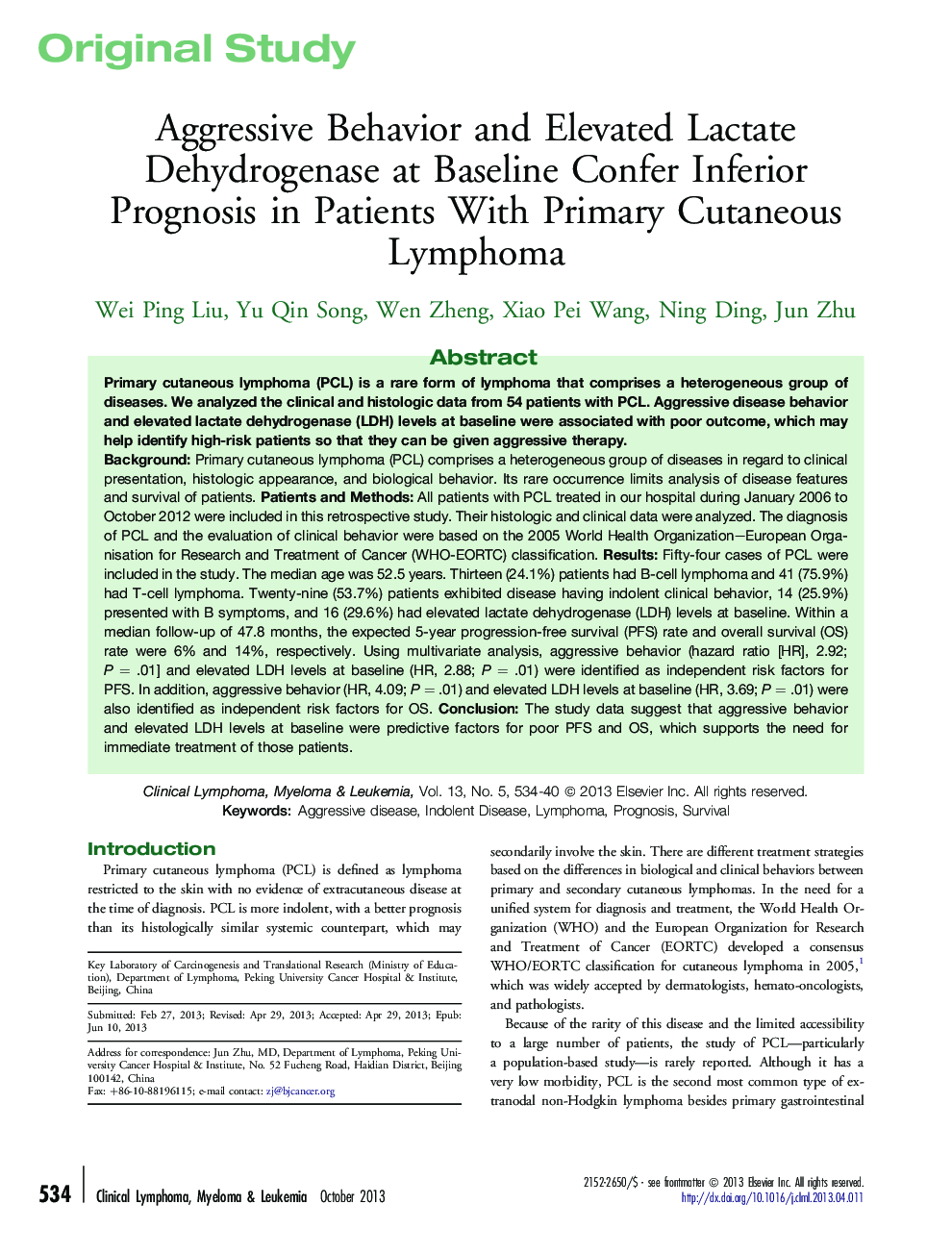| Article ID | Journal | Published Year | Pages | File Type |
|---|---|---|---|---|
| 2754718 | Clinical Lymphoma Myeloma and Leukemia | 2013 | 7 Pages |
BackgroundPrimary cutaneous lymphoma (PCL) comprises a heterogeneous group of diseases in regard to clinical presentation, histologic appearance, and biological behavior. Its rare occurrence limits analysis of disease features and survival of patients.Patients and MethodsAll patients with PCL treated in our hospital during January 2006 to October 2012 were included in this retrospective study. Their histologic and clinical data were analyzed. The diagnosis of PCL and the evaluation of clinical behavior were based on the 2005 World Health Organization–European Organisation for Research and Treatment of Cancer (WHO-EORTC) classification.ResultsFifty-four cases of PCL were included in the study. The median age was 52.5 years. Thirteen (24.1%) patients had B-cell lymphoma and 41 (75.9%) had T-cell lymphoma. Twenty-nine (53.7%) patients exhibited disease having indolent clinical behavior, 14 (25.9%) presented with B symptoms, and 16 (29.6%) had elevated lactate dehydrogenase (LDH) levels at baseline. Within a median follow-up of 47.8 months, the expected 5-year progression-free survival (PFS) rate and overall survival (OS) rate were 6% and 14%, respectively. Using multivariate analysis, aggressive behavior (hazard ratio [HR], 2.92; P = .01] and elevated LDH levels at baseline (HR, 2.88; P = .01) were identified as independent risk factors for PFS. In addition, aggressive behavior (HR, 4.09; P = .01) and elevated LDH levels at baseline (HR, 3.69; P = .01) were also identified as independent risk factors for OS.ConclusionThe study data suggest that aggressive behavior and elevated LDH levels at baseline were predictive factors for poor PFS and OS, which supports the need for immediate treatment of those patients.
